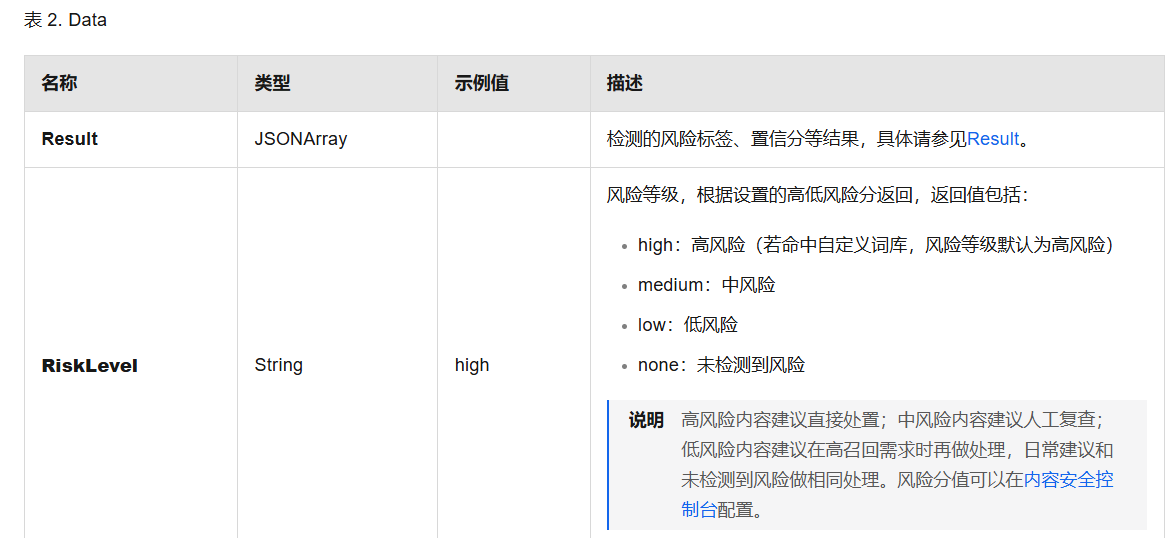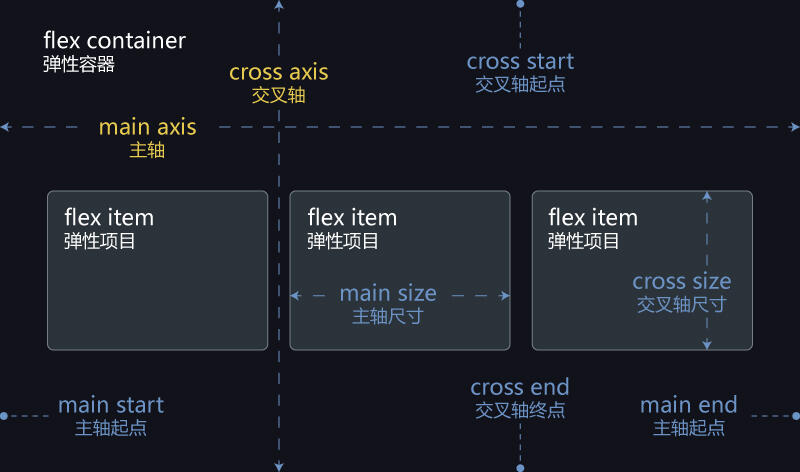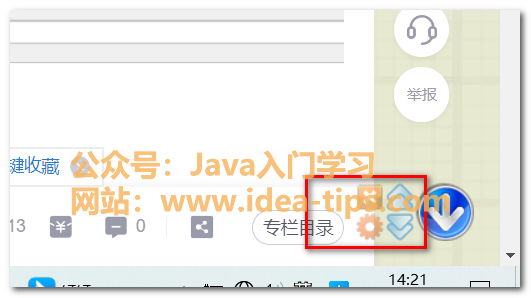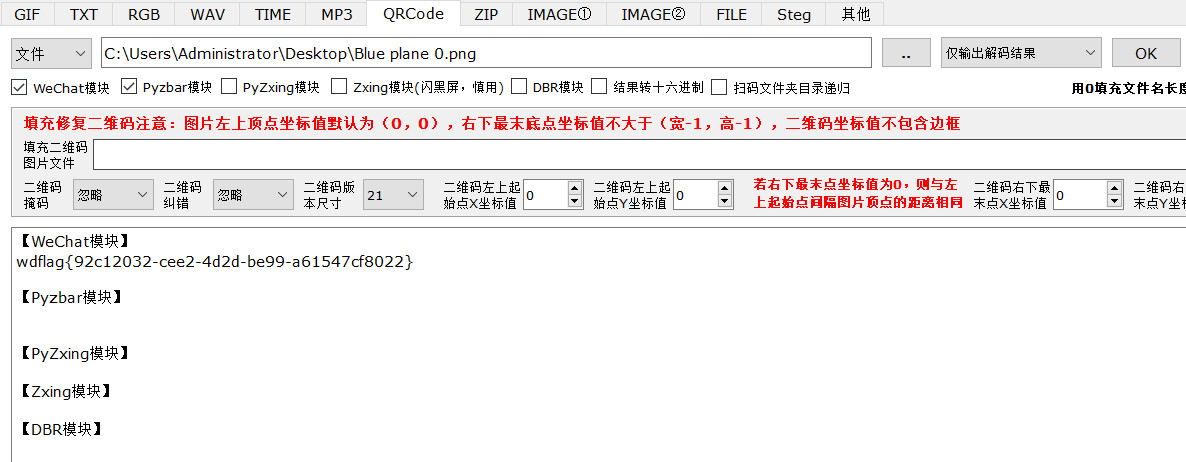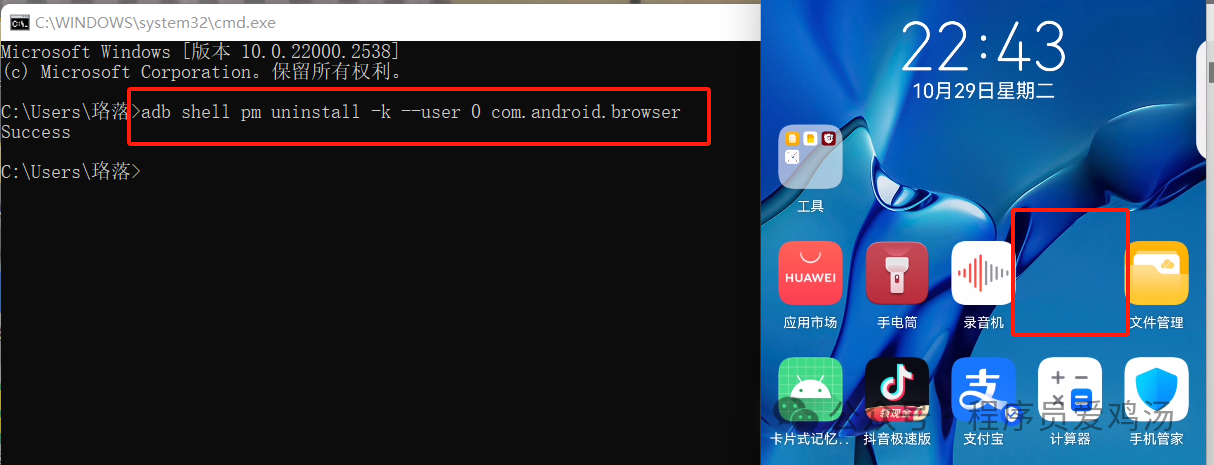目录
- 1.视频采集模块中的类
- 1.1 视频采集基础模块(VideoCaptureModule)
- 1.2 视频采集工厂类(VideoCaptureFactory)
- 1.3 设备信息的实现(DeviceInfoImpl)
- 1.4 视频采集的实现(VideoCaptureImpl)
- 1.5 Windows平台下设备信息的实现(DeviceInfoDS)
- 1.6 Windows平台接受采集数据(CaptureInputPin和CaptureSinkFilter)
- 1.7 Windows平台执行采集(VideoCaptureDS)
- 2.数据图
参考:WebRTC源码分析-呼叫建立过程之四(中)(创建并添加本地视频轨到PeerConnection)
1.视频采集模块中的类
WebRTC主体是基于C++实现的框架,有必要分析其中各个类之间的继承关系。视频采集模块的代码在modules/video_capture中,其中有很多个文件,逐一分析。需要说明的是,采集模块与使用的平台强相关,不同的操作系统会使用不同的采集方式,在这里我记录的是Windows平台。因为RTC场景下Android平台和Windows平台使用量比较多,但是Android平台还涉及到JNI这一层,比Windows更复杂一些。
1.1 视频采集基础模块(VideoCaptureModule)
VideoCaptureModule的声明位于modules/video_capture/video_capture.h中,是VideoCapture模块中很基础的类,其中声明了大量纯虚函数,即VideoCaptureModule的子类必须实现这些虚函数。VideoCaptureModule中主要定义了设备信息、采集功能、旋转角度(与渲染有关)的相关函数
class VideoCaptureModule : public RefCountInterface {
public:
// Interface for receiving information about available camera devices.
class DeviceInfo {
public:
virtual uint32_t NumberOfDevices() = 0; // 设备的数量,例如对于Android设备的Camera1和Camera2
// Returns the available capture devices.
// deviceNumber - Index of capture device.
// deviceNameUTF8 - Friendly name of the capture device.
// deviceUniqueIdUTF8 - Unique name of the capture device if it exist.
// Otherwise same as deviceNameUTF8.
// productUniqueIdUTF8 - Unique product id if it exist.
// Null terminated otherwise.
// 获取可用的采集设备
// deviceNumber: 设备的编号
// deviceNameUTF8: 设备的昵称(例如用户易于识别的型号)
// deviceUniqueIdUTF8: 设备的独有名称
// productUniqueIdUTF8: product独有ID号
virtual int32_t GetDeviceName(uint32_t deviceNumber,
char* deviceNameUTF8,
uint32_t deviceNameLength,
char* deviceUniqueIdUTF8,
uint32_t deviceUniqueIdUTF8Length,
char* productUniqueIdUTF8 = 0,
uint32_t productUniqueIdUTF8Length = 0) = 0;
// Returns the number of capabilities this device.
// 返回当前设备具有的能力
virtual int32_t NumberOfCapabilities(const char* deviceUniqueIdUTF8) = 0;
// Gets the capabilities of the named device.
// 获取给定名称的设备的能力
virtual int32_t GetCapability(const char* deviceUniqueIdUTF8,
uint32_t deviceCapabilityNumber,
VideoCaptureCapability& capability) = 0;
// Gets clockwise angle the captured frames should be rotated in order
// to be displayed correctly on a normally rotated display.
// 获取顺时针旋转角度,以便在普通旋转的显示屏上正确显示捕获的帧
// 这里应该面向的是渲染问题,因为渲染过程中的图像是需要倒置的,180°旋转
virtual int32_t GetOrientation(const char* deviceUniqueIdUTF8,
VideoRotation& orientation) = 0;
// Gets the capability that best matches the requested width, height and
// frame rate.
// Returns the deviceCapabilityNumber on success.
// 获取与请求的宽度、高度和帧率最为匹配的能力。
// 成功时返回设备能力编号。
virtual int32_t GetBestMatchedCapability(
const char* deviceUniqueIdUTF8,
const VideoCaptureCapability& requested,
VideoCaptureCapability& resulting) = 0;
// Display OS /capture device specific settings dialog
// 显示操作系统/捕获设备特定的设置对话框。
virtual int32_t DisplayCaptureSettingsDialogBox(
const char* deviceUniqueIdUTF8,
const char* dialogTitleUTF8,
void* parentWindow,
uint32_t positionX,
uint32_t positionY) = 0;
virtual ~DeviceInfo() {}
};
// Register capture data callback
// 注册采集数据的回调函数
virtual void RegisterCaptureDataCallback(
rtc::VideoSinkInterface<VideoFrame>* dataCallback) = 0;
virtual void RegisterCaptureDataCallback(
RawVideoSinkInterface* dataCallback) = 0;
// Remove capture data callback
// 移除采集数据的回调函数
virtual void DeRegisterCaptureDataCallback() = 0;
// Start capture device
// 开始执行采集
virtual int32_t StartCapture(const VideoCaptureCapability& capability) = 0;
// 停止采集
virtual int32_t StopCapture() = 0;
// Returns the name of the device used by this module.
// 获取当前设备的名称
virtual const char* CurrentDeviceName() const = 0;
// Returns true if the capture device is running
// 检查当前设备是否已经开始采集
virtual bool CaptureStarted() = 0;
// Gets the current configuration.
// 获取当前的配置信息
virtual int32_t CaptureSettings(VideoCaptureCapability& settings) = 0;
// Set the rotation of the captured frames.
// If the rotation is set to the same as returned by
// DeviceInfo::GetOrientation the captured frames are
// displayed correctly if rendered.
// 设置捕获帧的旋转角度。
// 如果旋转角度设置与`DeviceInfo::GetOrientation`返回的值相同,则捕获的帧在渲染时能够正确显示。
virtual int32_t SetCaptureRotation(VideoRotation rotation) = 0;
// Tells the capture module whether to apply the pending rotation. By default,
// the rotation is applied and the generated frame is up right. When set to
// false, generated frames will carry the rotation information from
// SetCaptureRotation. Return value indicates whether this operation succeeds.
// 告诉捕获模块是否应用待定的旋转。默认情况下,
// 旋转会被应用,生成的帧是正向的。当设置为false时,生成的帧将携带从
// SetCaptureRotation设置的旋转信息。返回值指示此操作是否成功。
virtual bool SetApplyRotation(bool enable) = 0;
// Return whether the rotation is applied or left pending.
// 返回旋转是否已应用或保持待定状态。
virtual bool GetApplyRotation() = 0;
protected:
~VideoCaptureModule() override {}
};
从继承关系来看,VideoCaptureModule的父类是RefCountInterface,这个类的声明位于api/ref_count.h中,是WebRTC当中一个至关重要的基类,因为涉及到了内存管理任务。在这个类当中,声明了两个const函数: Addref()和Release(),其中Addref()的作用是添加对当前对象的引用计数,Release()的作用是将当前对象的引用计数减1,如果减1之后为0,那么当前的对象会被释放掉。
对于这个类的简单理解是,程序在运行的过程中,有可能有很多地方需要使用到某一个对象,为此需要对当前对象进行一个使用计数,每多一个使用者,计数器加1,只有计数器为0时,该对象才可以被释放掉,这对于内存管理是至关重要的,因为极有可能会出现某一个对象在错误的时刻被释放掉,从而导致内存泄漏。这个概念可以类比FFmpeg当中的AVBufferRef,与FFmpeg不同的是,这里使用的是继承的方法实现,而FFmpeg中是结构体中将AVBufferRef作为一个成员。
// Refcounted objects should implement the following informal interface:
//
// void AddRef() const ;
// RefCountReleaseStatus Release() const;
//
// You may access members of a reference-counted object, including the AddRef()
// and Release() methods, only if you already own a reference to it, or if
// you're borrowing someone else's reference. (A newly created object is a
// special case: the reference count is zero on construction, and the code that
// creates the object should immediately call AddRef(), bringing the reference
// count from zero to one, e.g., by constructing an rtc::scoped_refptr).
//
// 您可以访问引用计数对象的成员,包括AddRef()和Release()方法,但前提是您已经拥有对它的引用,
// 或者您是借用别人的引用。(新创建的对象是一个特殊情况:在构造时引用计数为零,创建对象的代码
// 应立即调用AddRef(),将引用计数从零增加到一,例如,通过构造一个rtc::scoped_refptr)。
// AddRef() creates a new reference to the object.
//
// AddRef()会为当前对象创建一个新的引用
// Release() releases a reference to the object; the caller now has one less
// reference than before the call. Returns kDroppedLastRef if the number of
// references dropped to zero because of this (in which case the object destroys
// itself). Otherwise, returns kOtherRefsRemained, to signal that at the precise
// time the caller's reference was dropped, other references still remained (but
// if other threads own references, this may of course have changed by the time
// Release() returns).
//
// `Release()` 方法释放对对象的引用;调用者现在比调用前少了一个引用。如果因为这次调用,
// 引用计数降到了零(在这种情况下,对象将销毁自身),则返回 `kDroppedLastRef`。否则,
// 返回 `kOtherRefsRemained`,以表明在调用者引用被释放的确切时刻,还有其他引用存在
// (但如果其他线程拥有引用,这可能在 `Release()` 返回时已发生变化)。
// The caller of Release() must treat it in the same way as a delete operation:
// Regardless of the return value from Release(), the caller mustn't access the
// object. The object might still be alive, due to references held by other
// users of the object, but the object can go away at any time, e.g., as the
// result of another thread calling Release().
//
// 调用 `Release()` 的代码必须将其视为与删除操作相同的方式处理:无论 `Release()` 的
// 返回值如何,调用者都不能访问该对象。由于其他用户对对象持有的引用,对象可能仍然存活,
// 但对象随时可能消失,例如,作为另一个线程调用 `Release()` 的结果。
// Calling AddRef() and Release() manually is discouraged. It's recommended to
// use rtc::scoped_refptr to manage all pointers to reference counted objects.
// Note that rtc::scoped_refptr depends on compile-time duck-typing; formally
// implementing the below RefCountInterface is not required.
// 手动调用 `AddRef()` 和 `Release()` 是不被鼓励的。建议使用 `rtc::scoped_refptr`
// 来管理所有指向引用计数对象的指针。请注意,`rtc::scoped_refptr` 依赖于编译时的鸭子
// 类型(duck-typing);正式实现下面的 `RefCountInterface` 并不是必需的。
enum class RefCountReleaseStatus { kDroppedLastRef, kOtherRefsRemained };
// Interfaces where refcounting is part of the public api should
// inherit this abstract interface. The implementation of these
// methods is usually provided by the RefCountedObject template class,
// applied as a leaf in the inheritance tree.
// 对于引用计数是公共API一部分的接口,应该继承这个抽象接口。这些方法的实现通常由
// `RefCountedObject` 模板类提供,它被用作继承树中的叶节点。
class RefCountInterface {
public:
virtual void AddRef() const = 0;
virtual RefCountReleaseStatus Release() const = 0;
// Non-public destructor, because Release() has exclusive responsibility for
// destroying the object.
protected:
virtual ~RefCountInterface() {}
};
1.2 视频采集工厂类(VideoCaptureFactory)
VideoCapture的工厂类VideoCaptureFactory,声明位于modules/video_capture/video_capture_factory.h中,包含了Create()和CreateDeviceInfo()函数,其中Create()用于创建一个视频采集模块对象,这个对象的类型是VideoCaptureModule,CreateDeviceInfo()用于创建设备信息,对象类型为DeviceInfo。另外,还可以通过VideoCaptureOptions辅助信息来创建这两个对象。
class RTC_EXPORT VideoCaptureFactory {
public:
// Create a video capture module object
// id - unique identifier of this video capture module object.
// deviceUniqueIdUTF8 - name of the device.
// Available names can be found by using GetDeviceName
static rtc::scoped_refptr<VideoCaptureModule> Create(
const char* deviceUniqueIdUTF8);
static rtc::scoped_refptr<VideoCaptureModule> Create(
VideoCaptureOptions* options,
const char* deviceUniqueIdUTF8);
static VideoCaptureModule::DeviceInfo* CreateDeviceInfo();
static VideoCaptureModule::DeviceInfo* CreateDeviceInfo(
VideoCaptureOptions* options);
private:
~VideoCaptureFactory();
};
上面使用到了VideoCaptureOptions这个类,它的声明位于modules/video_capture/video_capture_options.h中,定义了视频采集的一些参数,包括采集状态、是否使用Linux、是否使用PIPEWIRE等。
#if defined(WEBRTC_USE_PIPEWIRE)
namespace videocapturemodule {
class PipeWireSession;
}
#endif
// An object that stores initialization parameters for video capturers
class RTC_EXPORT VideoCaptureOptions {
public:
VideoCaptureOptions();
VideoCaptureOptions(const VideoCaptureOptions& options);
VideoCaptureOptions(VideoCaptureOptions&& options);
~VideoCaptureOptions();
VideoCaptureOptions& operator=(const VideoCaptureOptions& options);
VideoCaptureOptions& operator=(VideoCaptureOptions&& options);
// 采集状态
enum class Status {
SUCCESS,
UNINITIALIZED,
UNAVAILABLE,
DENIED,
ERROR,
MAX_VALUE = ERROR
};
// 回调函数
class Callback {
public:
// 纯虚回调函数,表示当前的VideoCaptureOption是否已经初始化了
virtual void OnInitialized(Status status) = 0;
protected:
virtual ~Callback() = default;
};
// 初始化
void Init(Callback* callback);
#if defined(WEBRTC_LINUX)
// V4L2是Linux下的用于处理视频设备的驱动程序开发的内核框架
bool allow_v4l2() const { return allow_v4l2_; }
void set_allow_v4l2(bool allow) { allow_v4l2_ = allow; }
#endif
#if defined(WEBRTC_USE_PIPEWIRE)
bool allow_pipewire() const { return allow_pipewire_; }
void set_allow_pipewire(bool allow) { allow_pipewire_ = allow; }
void set_pipewire_fd(int fd) { pipewire_fd_ = fd; }
rtc::scoped_refptr<videocapturemodule::PipeWireSession> pipewire_session();
#endif
private:
#if defined(WEBRTC_LINUX)
bool allow_v4l2_ = false;
#endif
#if defined(WEBRTC_USE_PIPEWIRE)
bool allow_pipewire_ = false;
int pipewire_fd_ = kInvalidPipeWireFd;
rtc::scoped_refptr<videocapturemodule::PipeWireSession> pipewire_session_;
#endif
};
1.3 设备信息的实现(DeviceInfoImpl)
在进行视频采集之前,需要先看看设备的初始化,DeviceInfoImpl是VideoCaptureModule中DeviceInfo的子类,实现了其中的一部分纯虚函数,其声明位于modules/video_capture/device_info_impl.h中。实现的函数包括:确定设备的能力、获取设备能力等功能。这里没有将所有父类函数实现,是因为并不确定是在哪种平台下面执行具体的代码,例如Windows、Linux和Android等,还需要其后的子类实现。
class DeviceInfoImpl : public VideoCaptureModule::DeviceInfo {
public:
DeviceInfoImpl();
~DeviceInfoImpl(void) override;
// 获取该设备能力的数量
int32_t NumberOfCapabilities(const char* deviceUniqueIdUTF8) override;
// 获取能力
int32_t GetCapability(const char* deviceUniqueIdUTF8,
uint32_t deviceCapabilityNumber,
VideoCaptureCapability& capability) override;
// 获取最佳匹配的能力
int32_t GetBestMatchedCapability(const char* deviceUniqueIdUTF8,
const VideoCaptureCapability& requested,
VideoCaptureCapability& resulting) override;
// 获取旋转角
int32_t GetOrientation(const char* deviceUniqueIdUTF8,
VideoRotation& orientation) override;
protected:
/* Initialize this object*/
virtual int32_t Init() = 0;
/*
* Fills the member variable _captureCapabilities with capabilities for the
* given device name.
*/
virtual int32_t CreateCapabilityMap(const char* deviceUniqueIdUTF8)
RTC_EXCLUSIVE_LOCKS_REQUIRED(_apiLock) = 0;
protected:
// Data members
// 一系列的能力
typedef std::vector<VideoCaptureCapability> VideoCaptureCapabilities;
VideoCaptureCapabilities _captureCapabilities RTC_GUARDED_BY(_apiLock);
Mutex _apiLock;
char* _lastUsedDeviceName RTC_GUARDED_BY(_apiLock);
uint32_t _lastUsedDeviceNameLength RTC_GUARDED_BY(_apiLock);
};
1.4 视频采集的实现(VideoCaptureImpl)
下面看看VideoCapture的实现,实现的类为VideoCaptureImpl,其声明位于modules/video_capture/video_capture_impl.h中,父类是VideoCaptureModule。这个类当中实现的功能有:创建VideoCapture、创建DeviceInfo、旋转角度、注册函数的回调、
namespace videocapturemodule {
// Class definitions
class RTC_EXPORT VideoCaptureImpl : public VideoCaptureModule {
public:
/*
* Create a video capture module object
*
* id - unique identifier of this video capture module object
* deviceUniqueIdUTF8 - name of the device. Available names can be found by
* using GetDeviceName
*/
// 创建VideoCaptureModule
static rtc::scoped_refptr<VideoCaptureModule> Create(
const char* deviceUniqueIdUTF8);
static rtc::scoped_refptr<VideoCaptureModule> Create(
VideoCaptureOptions* options,
const char* deviceUniqueIdUTF8);
// 创建DeviceInfo
static DeviceInfo* CreateDeviceInfo();
static DeviceInfo* CreateDeviceInfo(VideoCaptureOptions* options);
// Helpers for converting between (integral) degrees and
// VideoRotation values. Return 0 on success.
// 用于在(整数)度和VideoRotation值之间相互转换的助手。成功时返回0。
static int32_t RotationFromDegrees(int degrees, VideoRotation* rotation);
static int32_t RotationInDegrees(VideoRotation rotation, int* degrees);
// Call backs
// 注册采集数据的回调函数
// 支持VideoSinkInterface和RawVideoSinkInterface两种类型
void RegisterCaptureDataCallback(
rtc::VideoSinkInterface<VideoFrame>* dataCallback) override;
virtual void RegisterCaptureDataCallback(
RawVideoSinkInterface* dataCallback) override;
// 取消采集数据的回调函数
void DeRegisterCaptureDataCallback() override;
// 设置采集的角度
int32_t SetCaptureRotation(VideoRotation rotation) override;
bool SetApplyRotation(bool enable) override;
bool GetApplyRotation() override;
// 获取当前设备名称
const char* CurrentDeviceName() const override;
// `capture_time` must be specified in NTP time format in milliseconds.
// 处理摄像头获取的帧(核心函数)
int32_t IncomingFrame(uint8_t* videoFrame,
size_t videoFrameLength,
const VideoCaptureCapability& frameInfo,
int64_t captureTime = 0);
// Platform dependent
// 与平台相关的采集函数
int32_t StartCapture(const VideoCaptureCapability& capability) override;
int32_t StopCapture() override;
bool CaptureStarted() override;
int32_t CaptureSettings(VideoCaptureCapability& /*settings*/) override;
protected:
VideoCaptureImpl();
~VideoCaptureImpl() override;
// Calls to the public API must happen on a single thread.
// 这是一个SequenceChecker对象,用于确保公共API的调用都在同一个线程上执行。
// 它用来检查对API的调用是否违反了单线程的约定,从而帮助防止多线程环境下的竞态条件。
SequenceChecker api_checker_;
// RaceChecker for members that can be accessed on the API thread while
// capture is not happening, and on a callback thread otherwise.
// 这是一个rtc::RaceChecker对象,用于检查在特定条件下,成员变量是否被多个线程访问。
// 当捕获没有发生时,成员变量可以在API线程上被访问,而在捕获发生时,则可能在回调线程上被访问。
// RaceChecker用于避免数据竞争,确保线程安全
rtc::RaceChecker capture_checker_;
// current Device unique name;
// 当前设备独有名称,这里的RTC_GUARDED_BY意思是只能在api_checker_的线程中进行访问
char* _deviceUniqueId RTC_GUARDED_BY(api_checker_);
Mutex api_lock_;
// Should be set by platform dependent code in StartCapture.
// 应当在StartCapture中被设置,基于不同的平台
VideoCaptureCapability _requestedCapability RTC_GUARDED_BY(api_checker_);
private:
void UpdateFrameCount();
uint32_t CalculateFrameRate(int64_t now_ns);
int32_t DeliverCapturedFrame(VideoFrame& captureFrame)
RTC_EXCLUSIVE_LOCKS_REQUIRED(api_lock_);
void DeliverRawFrame(uint8_t* videoFrame,
size_t videoFrameLength,
const VideoCaptureCapability& frameInfo,
int64_t captureTime)
RTC_EXCLUSIVE_LOCKS_REQUIRED(api_lock_);
// last time the module process function was called.
// 上一次模块过程函数被调用的时间
int64_t _lastProcessTimeNanos RTC_GUARDED_BY(capture_checker_);
// last time the frame rate callback function was called.
// 上一次帧率回调函数被调用的时间
int64_t _lastFrameRateCallbackTimeNanos RTC_GUARDED_BY(capture_checker_);
rtc::VideoSinkInterface<VideoFrame>* _dataCallBack RTC_GUARDED_BY(api_lock_);
RawVideoSinkInterface* _rawDataCallBack RTC_GUARDED_BY(api_lock_);
int64_t _lastProcessFrameTimeNanos RTC_GUARDED_BY(capture_checker_);
// timestamp for local captured frames
// 本地捕获帧的时间戳
int64_t _incomingFrameTimesNanos[kFrameRateCountHistorySize] RTC_GUARDED_BY(
capture_checker_);
// Set if the frame should be rotated by the capture module.
// 如果需要旋转,则由采集模块配置
VideoRotation _rotateFrame RTC_GUARDED_BY(api_lock_);
// Indicate whether rotation should be applied before delivered externally.
bool apply_rotation_ RTC_GUARDED_BY(api_lock_);
};
在上面的声明中,涉及到了VideoSinkInterface和RawVideoSinkInterface两个类,这两个类都能够用于处理获取的视频帧。VideoSinkInterface的声明位于api/video/video_sink_interface.h中,RawVideoSinkInterface的声明位于modules/video_capture/raw_video_sink_interface.h中。从声明中可以看出,其中定义的核心函数分别是OnRawFrame()和OnFrame(),均为回调函数(一般带有On前缀的是回调函数)。
// 位于modules/video_capture/raw_video_sink_interface.h
class RawVideoSinkInterface {
public:
virtual ~RawVideoSinkInterface() = default;
// 处理原始视频帧
virtual int32_t OnRawFrame(uint8_t* videoFrame,
size_t videoFrameLength,
const webrtc::VideoCaptureCapability& frameInfo,
VideoRotation rotation,
int64_t captureTime) = 0;
};
// 位于api/video/video_sink_interface.h
template <typename VideoFrameT>
class VideoSinkInterface {
public:
virtual ~VideoSinkInterface() = default;
// 处理视频帧
virtual void OnFrame(const VideoFrameT& frame) = 0;
// Should be called by the source when it discards the frame due to rate
// limiting.
// 当源由于速率限制丢弃帧时,应该被源调用。
virtual void OnDiscardedFrame() {}
// Called on the network thread when video constraints change.
// TODO(crbug/1255737): make pure virtual once downstream project adapts.
// 在网络线程上调用,当视频约束发生变化时。
// TODO(crbug/1255737):一旦下游项目适应,就变为纯虚函数。
virtual void OnConstraintsChanged(
const webrtc::VideoTrackSourceConstraints& /* constraints */) {}
};
1.5 Windows平台下设备信息的实现(DeviceInfoDS)
老版本的Windows设备使用的是DirectShow(DS)多媒体框架,新版本的Windows设备普遍使用的是Microsoft Media Foundation(IMF)多媒体框架,新版本Windows兼容DirectShow。DeviceInfoDS描述了在Windows平台下,处理视频采集设备类的实现,其声明位于modules/video_capture/windows/device_info_ds.h
class DeviceInfoDS : public DeviceInfoImpl {
public:
// Factory function.
static DeviceInfoDS* Create();
DeviceInfoDS();
~DeviceInfoDS() override;
// 设备的初始化
int32_t Init() override;
// 设备的数量
uint32_t NumberOfDevices() override;
/*
* Returns the available capture devices.
*/
// 获取可用设备
int32_t GetDeviceName(uint32_t deviceNumber,
char* deviceNameUTF8,
uint32_t deviceNameLength,
char* deviceUniqueIdUTF8,
uint32_t deviceUniqueIdUTF8Length,
char* productUniqueIdUTF8,
uint32_t productUniqueIdUTF8Length) override;
/*
* Display OS /capture device specific settings dialog
*/
// 显示操作系统/捕获设备特定的设置对话框。
int32_t DisplayCaptureSettingsDialogBox(const char* deviceUniqueIdUTF8,
const char* dialogTitleUTF8,
void* parentWindow,
uint32_t positionX,
uint32_t positionY) override;
// Windows specific
/* Gets a capture device filter
The user of this API is responsible for releasing the filter when it not
needed.
*/
// 获取一个捕获设备过滤器,使用此API的用户在不再需要该过滤器时负责释放它。
IBaseFilter* GetDeviceFilter(const char* deviceUniqueIdUTF8,
char* productUniqueIdUTF8 = NULL,
uint32_t productUniqueIdUTF8Length = 0);
// 获取Windows平台下设备的能力
int32_t GetWindowsCapability(
int32_t capabilityIndex,
VideoCaptureCapabilityWindows& windowsCapability);
// 获取product的ID号
static void GetProductId(const char* devicePath,
char* productUniqueIdUTF8,
uint32_t productUniqueIdUTF8Length);
protected:
// 获取设备信息
int32_t GetDeviceInfo(uint32_t deviceNumber,
char* deviceNameUTF8,
uint32_t deviceNameLength,
char* deviceUniqueIdUTF8,
uint32_t deviceUniqueIdUTF8Length,
char* productUniqueIdUTF8,
uint32_t productUniqueIdUTF8Length);
// 创建能力图
int32_t CreateCapabilityMap(const char* deviceUniqueIdUTF8) override
RTC_EXCLUSIVE_LOCKS_REQUIRED(_apiLock);
private:
// ICreateDevEnum 接口用于创建一个设备枚举器,该枚举器可以列出系统中的所有视频捕获设备。
// 这个变量用于访问和管理视频捕获设备。
ICreateDevEnum* _dsDevEnum;
// IEnumMoniker 接口用于枚举设备,它提供了迭代设备的能力。
// 这个变量用于遍历和管理设备列表。
IEnumMoniker* _dsMonikerDevEnum;
// CoUninitialize 是Windows API中的一个函数,用于在应用程序结束之前清理COM库。
// 这个变量通常用于确保在应用程序退出时正确清理COM资源。
bool _CoUninitializeIsRequired;
// VideoCaptureCapabilityWindows 是一个类,它封装了Windows平台上的视频捕获能力,如分辨率、帧率和格式等。
// 这个变量用于存储和管理Windows平台上所有可用的视频捕获能力。
std::vector<VideoCaptureCapabilityWindows> _captureCapabilitiesWindows;
};
其中使用的VideoCaptureCapabilityWindows的声明如下
struct VideoCaptureCapabilityWindows : public VideoCaptureCapability {
uint32_t directShowCapabilityIndex;
bool supportFrameRateControl;
VideoCaptureCapabilityWindows() {
directShowCapabilityIndex = 0;
supportFrameRateControl = false;
}
};
1.6 Windows平台接受采集数据(CaptureInputPin和CaptureSinkFilter)
从Windows平台上接受采集数据的类有两个,CaptureInputPin和CaptureSinkFilter,其中CaptureInputPin直接与Windows端口连接,更加底层,而CaptureSinkFilter会处理从Windows端口获取的帧数据,还会对连接进行操作,相对而言上层一点。CaptureInputPin声明位于modules/video_capture/windows/sink_filter_ds.h中,实现了一系列与Windows平台对接的函数,如连接、问询、接收数据等功能
// Input pin for camera input
// Implements IMemInputPin, IPin.
class CaptureInputPin : public IMemInputPin, public IPin {
public:
CaptureInputPin(CaptureSinkFilter* filter);
// 根据要求设置能力
HRESULT SetRequestedCapability(const VideoCaptureCapability& capability);
// Notifications from the filter.
// Filter使用的回调函数
void OnFilterActivated();
void OnFilterDeactivated();
protected:
virtual ~CaptureInputPin();
private:
CaptureSinkFilter* Filter() const;
// 尝试连接
HRESULT AttemptConnection(IPin* receive_pin, const AM_MEDIA_TYPE* media_type);
std::vector<AM_MEDIA_TYPE*> DetermineCandidateFormats(
IPin* receive_pin,
const AM_MEDIA_TYPE* media_type);
void ClearAllocator(bool decommit);
HRESULT CheckDirection(IPin* pin) const;
// IUnknown
/*
STDMETHOD宏,它通常定义为virtual HRESULT STDMETHODCALLTYPE,其中STDMETHODCALLTYPE
是一个调用约定宏,确保函数使用stdcall调用约定,这是COM接口的标准调用约定。
*/
// 用来查询视频捕获设备是否支持特定的接口, 例如IMediaEvent或IMediaControl
// REFIID是IID(Interface Identifier)的引用类型
STDMETHOD(QueryInterface)(REFIID riid, void** ppv) override;
// clang-format off
// clang isn't sure what to do with the longer STDMETHOD() function
// declarations.
// IPin
// 建立两个DirectShow过滤器之间的连接,receive_pin参数是指向接收端过滤器的IPin
// 接口的指针,这个过滤器是数据流的接收端
STDMETHOD(Connect)(IPin* receive_pin,
const AM_MEDIA_TYPE* media_type) override;
//
STDMETHOD(ReceiveConnection)(IPin* connector,
const AM_MEDIA_TYPE* media_type) override;
STDMETHOD(Disconnect)() override;
STDMETHOD(ConnectedTo)(IPin** pin) override;
STDMETHOD(ConnectionMediaType)(AM_MEDIA_TYPE* media_type) override;
STDMETHOD(QueryPinInfo)(PIN_INFO* info) override;
STDMETHOD(QueryDirection)(PIN_DIRECTION* pin_dir) override;
STDMETHOD(QueryId)(LPWSTR* id) override;
STDMETHOD(QueryAccept)(const AM_MEDIA_TYPE* media_type) override;
STDMETHOD(EnumMediaTypes)(IEnumMediaTypes** types) override;
STDMETHOD(QueryInternalConnections)(IPin** pins, ULONG* count) override;
STDMETHOD(EndOfStream)() override;
STDMETHOD(BeginFlush)() override;
STDMETHOD(EndFlush)() override;
STDMETHOD(NewSegment)(REFERENCE_TIME start, REFERENCE_TIME stop,
double rate) override;
// IMemInputPin
STDMETHOD(GetAllocator)(IMemAllocator** allocator) override;
STDMETHOD(NotifyAllocator)(IMemAllocator* allocator, BOOL read_only) override;
STDMETHOD(GetAllocatorRequirements)(ALLOCATOR_PROPERTIES* props) override;
STDMETHOD(Receive)(IMediaSample* sample) override;
STDMETHOD(ReceiveMultiple)(IMediaSample** samples, long count,
long* processed) override;
STDMETHOD(ReceiveCanBlock)() override;
// clang-format on
SequenceChecker main_checker_;
SequenceChecker capture_checker_;
VideoCaptureCapability requested_capability_ RTC_GUARDED_BY(main_checker_);
// Accessed on the main thread when Filter()->IsStopped() (capture thread not
// running), otherwise accessed on the capture thread.
VideoCaptureCapability resulting_capability_;
DWORD capture_thread_id_ = 0;
rtc::scoped_refptr<IMemAllocator> allocator_ RTC_GUARDED_BY(main_checker_);
rtc::scoped_refptr<IPin> receive_pin_ RTC_GUARDED_BY(main_checker_);
std::atomic_bool flushing_{false};
std::atomic_bool runtime_error_{false};
// Holds a referenceless pointer to the owning filter, the name and
// direction of the pin. The filter pointer can be considered const.
PIN_INFO info_ = {};
AM_MEDIA_TYPE media_type_ RTC_GUARDED_BY(main_checker_) = {};
};
CaptureSinkFilter的定义位于modules/video_capture/windows/sink_filter_ds.h中
// Implement IBaseFilter (including IPersist and IMediaFilter).
class CaptureSinkFilter : public IBaseFilter {
public:
CaptureSinkFilter(VideoCaptureImpl* capture_observer);
// 根据要求设置能力
HRESULT SetRequestedCapability(const VideoCaptureCapability& capability);
// Called on the capture thread.
// 处理从摄像头获取的帧,在capture县城中执行
void ProcessCapturedFrame(unsigned char* buffer,
size_t length,
const VideoCaptureCapability& frame_info);
void NotifyEvent(long code, LONG_PTR param1, LONG_PTR param2);
bool IsStopped() const;
// IUnknown
// 用于接口查询。它允许客户端请求对象的其他接口。REFIID 是一个接口ID的引用
STDMETHOD(QueryInterface)(REFIID riid, void** ppv) override;
// IPersist
// IPersist 接口的方法,用于获取对象的类ID。类ID是一个全局唯一标识符(GUID),
// 用于标识对象的类。CLSID 是 GUID 类型的别名,clsid 参数是一个指向 GUID 的指针,用于存储对象的类ID
STDMETHOD(GetClassID)(CLSID* clsid) override;
// IMediaFilter.
// 下面都是IMediaFilter接口的方法
// 获取媒体过滤器的当前状态,FILTER_STATE 是一个枚举类型,表示过滤器的状态(如停止、暂停、运行等)
STDMETHOD(GetState)(DWORD msecs, FILTER_STATE* state) override;
// 设置同步源。IReferenceClock 是一个接口,提供时间戳和同步功能。
STDMETHOD(SetSyncSource)(IReferenceClock* clock) override;
// 获取当前的同步源
STDMETHOD(GetSyncSource)(IReferenceClock** clock) override;
// 暂停媒体流的处理
STDMETHOD(Pause)() override;
// 开始处理媒体流
STDMETHOD(Run)(REFERENCE_TIME start) override;
// 停止媒体流的处理
STDMETHOD(Stop)() override;
// IBaseFilter
// 下面都是IBaseFilter接口的方法
// 枚举一个过滤器的所有pin
STDMETHOD(EnumPins)(IEnumPins** pins) override;
// 根据引脚的标识符查找特定的pin
STDMETHOD(FindPin)(LPCWSTR id, IPin** pin) override;
// 查询过滤器的信息
STDMETHOD(QueryFilterInfo)(FILTER_INFO* info) override;
// 将过滤器加入到一个过滤器图(filter graph)中
STDMETHOD(JoinFilterGraph)(IFilterGraph* graph, LPCWSTR name) override;
// 查询过滤器的供应商信息
STDMETHOD(QueryVendorInfo)(LPWSTR* vendor_info) override;
protected:
virtual ~CaptureSinkFilter();
private:
/*
关于SequenceChecker的解释,WebRTC是这么说的:
SequenceChecker 是一个辅助类,用于帮助验证类的某些方法是否在相同的任务队列或线程上被调用。
如果一个 SequenceChecker 对象是在任务队列上创建的,那么它就与该任务队列绑定;否则,它与一个线程绑定。
*/
SequenceChecker main_checker_;
const rtc::scoped_refptr<ComRefCount<CaptureInputPin>> input_pin_;
VideoCaptureImpl* const capture_observer_;
FILTER_INFO info_ RTC_GUARDED_BY(main_checker_) = {};
// Set/cleared in JoinFilterGraph. The filter must be stopped (no capture)
// at that time, so no lock is required. While the state is not stopped,
// the sink will be used from the capture thread.
IMediaEventSink* sink_ = nullptr;
FILTER_STATE state_ RTC_GUARDED_BY(main_checker_) = State_Stopped;
};
1.7 Windows平台执行采集(VideoCaptureDS)
Windows平台执行采集的类为VideoCaptureDS,其父类为VideoCaptureImpl。在VideoCaptureDS中,主要实现了采集的开始/结束两个函数,即StartCapture()和StopCapture()。VideoCaptureDS
class VideoCaptureDS : public VideoCaptureImpl {
public:
VideoCaptureDS();
virtual int32_t Init(const char* deviceUniqueIdUTF8);
/*************************************************************************
*
* Start/Stop
*
*************************************************************************/
int32_t StartCapture(const VideoCaptureCapability& capability) override;
int32_t StopCapture() override;
/**************************************************************************
*
* Properties of the set device
*
**************************************************************************/
bool CaptureStarted() override;
int32_t CaptureSettings(VideoCaptureCapability& settings) override;
protected:
~VideoCaptureDS() override;
// Help functions
int32_t SetCameraOutput(const VideoCaptureCapability& requestedCapability);
int32_t DisconnectGraph();
HRESULT ConnectDVCamera();
DeviceInfoDS _dsInfo RTC_GUARDED_BY(api_checker_);
IBaseFilter* _captureFilter RTC_GUARDED_BY(api_checker_);
IGraphBuilder* _graphBuilder RTC_GUARDED_BY(api_checker_);
IMediaControl* _mediaControl RTC_GUARDED_BY(api_checker_);
rtc::scoped_refptr<CaptureSinkFilter> sink_filter_
RTC_GUARDED_BY(api_checker_);
IPin* _inputSendPin RTC_GUARDED_BY(api_checker_);
IPin* _outputCapturePin RTC_GUARDED_BY(api_checker_);
// Microsoft DV interface (external DV cameras)
IBaseFilter* _dvFilter RTC_GUARDED_BY(api_checker_);
IPin* _inputDvPin RTC_GUARDED_BY(api_checker_);
IPin* _outputDvPin RTC_GUARDED_BY(api_checker_);
};
2.数据图
面向Windows平台的视频帧采集流程,结合UML图,做了一张数据流图,大体分为四个步骤:
(1)从摄像头获取视频帧数据(底层实现)
(2)处理从摄像头中获取到的视频帧
(3)处理从Windows层获取到的视频帧,并且送入帧处理器中
从底层获取的帧,可以分为RawFrame和Frame,RawFrame通常是未转换格式的帧,如MJPG,而Frame通常是转换格式之后的帧,如I420格式。
(4)处理获取的帧
对于已经获取的帧,可以送入到渲染当中进行本地渲染显示,也可以送入到编码流程当中进行编码,随后发送到远端。大多数情况下,会同时进行本地显示和编码发送,所以需要以组播的方式发送到两个不同的模块当中。





